Good sequels and good fantasies keep the stream from drying up this season.
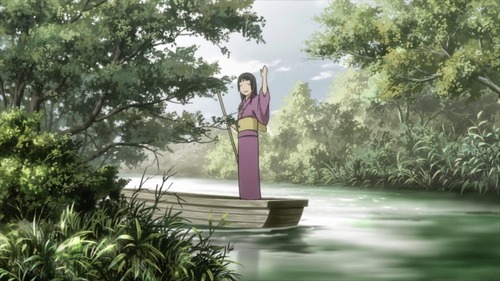
My fall watchlist is considerably smaller than my summer one, partly because of time constraints on my part, but mostly because there just isn’t as much that interests me this season. Not counting sequels (and yes, I count Fate/stay night as a sequel even though it technically isn’t), I’ve only kept up with seven new shows this season. Compare that to summer’s whopping 13 at the midway mark, and it sounds pretty dismal by all accounts.
That said, there is a pleasant ray of hope this fall: Fantasies have made a sudden and welcome comeback, as nearly every new series on this list features some element of magic or “arealism.” Better still, a fair number of them are two-cour, continuing this year’s trend of studios producing longer series (a very nice trend indeed). And hey, I’m also trying to watch half a dozen U.S. shows and a trio of sports, so maybe the shortened list isn’t such a bad thing.
Most everything falls (pun always intended) in “solidly watchable” B-range territory, with a couple standouts and a couple series hovering near the chopping block. What’s shining and what’s dimming? Hit the jump for a midseason check-in.
Returning Friends

Mushi-shi: The Next Passage (Mushishi Zoku Shou), Part 2
Grade: A+
A friend the other day pointed out that while I was fairly liberal with my 9s and 8s on MyAnimeList, I almost never gave a series a 10/10, to which I responded that the “10” is labeled “Masterpiece,” and that’s not a word to be thrown around lightly. I treat A+ grades the same way I treat 10s, and make no mistake, Mushishi is absolutely worthy of that score. There is no piece of this production that isn’t meticulously considered and crafted, from script to music to art, all woven together to create a tone and theme and tell a new story each week that is, at worst, very good and, at best, pretty much perfect.
There’s also something to be said for the way Director Nagahama has organized the adaptation, allowing the individual stories to string together thematically. This cour has at times seemed like an extended meditation on physical pathways (such as tunnels and canals) and personal connections (between family and friends alike), and how we can find and lose our way – sometimes simultaneously – while traveling along those many varied paths. It’s brilliantly done, really, how the series can function so excellently on a micro episode-by-episode level but also form broader patterns when viewed from a multi-episode distance, and hats off to Nagahama for taking excellent source material and finding a way to make it even better.
I’m running out of ways to praise this series, to be honest. If you haven’t watched it already, you really should. Due to its episodic, “short story” structure, it’s a series meant to be savored rather than binge-watched, but 1-2 episodes a week will add a whole lot of excellent to your life.
YowaPeda (Yowamushi Pedal: Grande Road)
Grade: B+
The epic that is the Interhigh continues, and Yowamushi Pedal just keeps on rollin’, finding new ways to engage me just when I’m certain they’ve run out of ideas. With the recent humanization of last season’s “Big Bad,” the spotlight now falls on Machimiya Eikichi and his Hiroshima Kureminami Tech Bicycle club. I worried that he would just be Midousuji 2.0, but his tactics are essentially the opposite – where Midousuji was focused on his individual skills, willing to toss off the “small fry” along the way, Machimiya utilizes smooth talk and pack mentality to provide a wholly new kind of threat. Oh, and he’s totally played by Seki Tomokazu, a titan of the industry and my all-time favorite male voice actor. It’s like YowaPeda is actively working to come up with new ways to make me love it.
I’m giving it the B+ due to some minor pacing issues and a tendency to let the antagonists vamp for too long, but don’t let that fool you: I enjoy the hell out of this series, and I’m eager to see how these new elements affect our plucky protagonist and his teammates on the last day of the race.
Chaika -The Coffin Princess- (Hitsugi no Chaika: Avenging Battle)
Grade: C+
I’m remembering a few key details about Chaika as we enter the final stretch of episodes: (1) It’s a bit of an uneven series in terms of storytelling quality, and (2) I enjoy it a lot more when it’s weaving multiple plot lines together, particularly those involving the Gillette Squad. What I’m trying to say is, I’ve really missed the Gillette Squad, and bringing them more thoroughly back into the action provided a huge boost to Episode 6. I think Chaika might be the kind of show that’s better when marathoned rather than watched week-by-week, because you’d have more time to have fun with the story as a whole and less time to notice the up-and-down quality of the individual episodes/arcs.
You’d also have less time to notice the fact that most of the characters are pretty static – despite some major story events, their general personalities/desires have hardly changed at all since the first episode, and it’s making it harder to care when it seems like the periodic plot twists don’t ever impact anyone in a dramatic way (except, again, with members of Team Gillette). All of which is to say that Chaika is still enjoyable but losing steam. I’m hoping the most recent (much improved) episode is a sign of a strong final arc that will help the series end with a bang instead of a fizzle.
Fantasy Highs
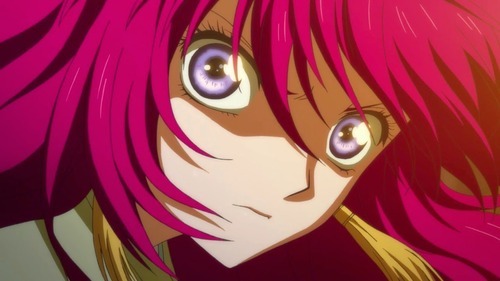
Yona of the Dawn (Akatsuki no Yona)
Grade: A-
Objectively this is probably a B or B+ series, but y’know what? Screw objectivity. This is an A-range series in my book. While AnY was a little slow out the gate, there were always signs that it had the potential to be something special, and here at the midway point of the first cour it’s pretty clear that those early signs weren’t leading us astray. What’s become increasingly clearer is that the slow or frustrating moments early on were very much a part of the plan, laying the groundwork so that what would come later would have more impact, both in terms of building the world/story/characters and in terms of connecting the audience emotionally to that story and its characters’ journeys.
For me, there are few things more annoying than a perpetual damsel (or dude) in distress – and few things more rewarding than watching a character transform from a helpless dependent to a driven, capable commander of her (or his) own destiny. Like the great fantasy epics that make up a good portion of my favorite anime, AnY understands dynamic characters, meaningful arcs, and that there are multiple facets to everyone’s personality, facets that may only reveal themselves in times of great turmoil (or great prosperity). This is a series both simple and complex, with a story that is easy to follow but also full of unknown information and competing perspectives, leading to compelling protagonists and antagonists alike.
Pierrot is also proving themselves more than up to the task of adapting the material, as the animation is beautiful when needed and fluid when needed (fight sequences are nicely choreographed and solidly animated), the orchestral score fits the tone to a T, and the creative team is adept at juggling the dramatic and comedic moments, sometimes turning on a dime between the two without either seeming out of place. I maintain that this is more Twelve Kingdoms or Saiunkoku than Fushigi Yuugi, but that balance between serious and funny was a huge part of what made FY so charming (and for all my issues with that adaptation, Pierrot handled the humor/drama switches very well there, too), and it’s making AnY not just an all-around good story, but one I’m really starting to fall in love with.
Rage of Bahamut: Genesis (Shingeki no Bahamut: Genesis)
Grade: B
What began as a cinematic and fun but somewhat shallow romp has slowly transformed into a thoroughly interesting and surprisingly complex story, complete with likable, flawed characters with extended backstories, relationships, and room for further development. Gods and demons flit in and out of the tale, Jeanne d’Arc is becoming a prominent figure, but everything circles around a quartet of misfits, giving the story a scope both epic and intimate. I also continue to adore the way this series goes about telling its story, revealing new nuggets of plot or world-building in an organic way instead of ramming them down our throats with forced dialogue or narrative voiceovers.
There’s a sense of immense enthusiasm and enjoyment behind this project, and both the style and tone are more old-school Hollywood than modern anime, making it a good “gateway” series for those who don’t watch a lot of anime (or who are maybe tired of the recent trends in the medium). The feel is simultaneously “classic” and refreshing, and continues to be a whole hell of a lot of fun. We don’t have an episode count on this one yet, but the “Stalker points” suggest the series may be a genuine hit, opening the door for additional episodes. Here’s hoping for at least a couple of cours. I’d happily spend 20-odd episodes with this group and their world.
Consistently Good
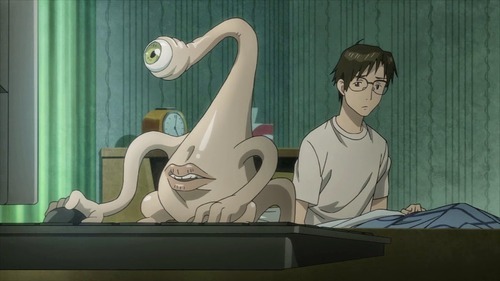
Parasyte -the maxim- (Kiseijuu: Sei no Kakuritsu)
Grade: B+
Unlike AnY, which probably deserves a B+ but gets an A- because of my growing attachment to the characters, Parasyte probably deserves that A- but gets the B+ due to my lack of attachment to the characters. This show is getting a fair amount of praise and it’s well-deserved, as there’s really no element of the production that isn’t done well, from the story itself (and the themes it explores), the animation, and even the music, which I finally noticed this week was a huge part of setting the mood for the series. And yet… I just don’t find myself caring especially much about what goes on each week, to the characters or the world at large.
Currently Parasyte is the kind of show I can appreciate on a purely objective level without ever really finding myself invested on the subjective level, which could be a problem as the series progresses, but for now I’m fine with the cerebral experience. And I will say that Episode 6 took the story and MC(s?) into some curious new directions, ramping up the tension and making me concerned for Shinichi in a way I hadn’t been before. So who knows? This could be one that slowly pulls me in until I’m not only interested, but genuinely invested. Either way it’s good enough to keep watching for now. We’ll see where this strange story goes next.
Fate/stay night [Unlimited Blade Works]
Grade: B
I’m enjoying F/sn quite a bit, thanks in no small part to the gorgeous and dynamic animation (ufotable, you are an international treasure), but I can’t bring myself to give it anything higher than a “B” at this point because the high school slice-of-life scenes aren’t really clicking. They’re not irritating, just… uninspired, I suppose, and feel rather rote and bland compared to the sweeping, operatic scope of the Grail War itself. There’s also been a whole lot of exposition, which I know is important for new viewers, but as someone who’s seen Fate/Zero, it makes the series drag during these early episodes.
Episode 5 (technically “6,” but the first episode was “Episode 0,” so… yeah) was probably my favorite since the premiere, an excellent blend of tension, action, mystery, world-building, and character development. I like both Rin and Shirou, but I like them much better when they’re dealing with Grail War Business instead of School Business, because that’s when we see their personalities transcend teenage “nice guy” and “tsundere” tropes to become complex and engaging individuals. More magic and less mundane, and I could see that grade going up very quickly.
Hit ‘n’ Miss
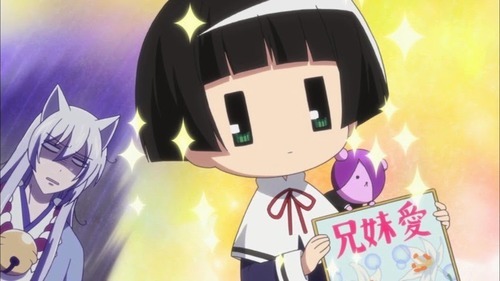
Gugure! Kokkuri-san
Grade: B (Ranges from an A to a D at any given moment)
My enjoyment of this show is inversely proportional to the amount of focus given to Inugami. I gave this one a glowing Premiere review and a rather damning Rule of Three Review, but I opted to give it another chance because I loved the first 1.5 episodes so much. The welcome addition of Shiragaki, a drunken, lazy lech of a tanuki with a surprising soft side (Maeno was right: tanuki really do make everything better!), as well as the introduction of “transfer student” Yamamoto and BullyFail Jimeko, helped to push Inugami into the margins and return the show to that balance of silliness, sadness, and warmth that originally drew me to the series.
Even the few moments where Inugami does take center stage have gotten somewhat more tolerable, partly because they’ve pulled back on the gross pedophile crap (and pressed harder on Inugami’s own brutal backstory), and partly because Kohina now fights back regularly (I actually applauded when she stabbed Inugami with the protractor in Episode 5). This isn’t a series for everyone and I could see how some of its problems could be deal-breakers for people, but if you enjoy a mix of absurdity and dark humor, and if you can make it past that infuriating Episode 3, there really is a lot to like about this series.
Your Lie in April (Shigatsu wa Kimi no Uso)
Grade: C+ (ranges from an A+ to an F at any given moment)
This may be the most polarizing anime I’ve seen in recent years – not just among the fanbase, but among a single person during a single episode. In Episode 6 alone I went from nearly throwing plushies at my TV to damn near choking up within about a 15-minute time span. Production values continue to be high, with beautiful art and animation, and the soundtrack is utterly gorgeous, but the content is a fluctuating mess and getting harder to handle each week. There’s not enough time in a midseason review to properly explain what about KimiUso works and what really doesn’t, but for me it comes down to a frustrating unevenness between flashes of genuine emotional honesty and three-dimensional characters on the one hand, and a litany of tasteless slapstick and “comedic” bullying on the other.
There are loads of other peaks and valleys involving KimiUso’s views on art and artists, trauma, and gender roles, but I think I could overlook a lot of them if the framing/tone of Kousei’s story were more sympathetically handled. The way the girls in the series continue to lump physical and verbal abuse on a boy whose entire psychology is defined by past physical and verbal abuse is becoming increasingly harder to deal with, largely because it feels like the author wants me to side with the girls here, and I so emphatically don’t. The second half of Episode 6 took some steps in the right direction, but I’m playing it by ear every week with this show, and there’s no telling when or if it’ll ever push itself off my watchlist.
Although, if nothing else, KimiUso has gotten a lot of people talking and thinking about how we handle abuse and trauma (both in our lives, the lives of others, and within our fiction), so I suppose that’s a kind of bonus. And speaking of those people talking, there are longer posts explaining all of this in better detail on both sides of the line, so I’ll point you to them instead of trying to boil this all down in a speed-review: Guardian Enzo gives typically well-reasoned (but ultimately damning) analysis, E Minor provides a harshly critical look at the series, and setsuken offers some respectful counterarguments.
Gaining Traction
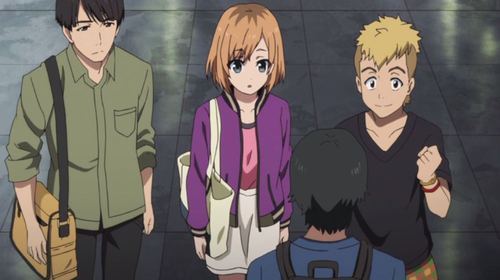
Shirobako
Grade: B-
If you wanted Shirobako to be a sharp satire of the anime industry, you’re going to be disappointed. While the series has proven itself willing to at least acknowledge and discuss some of the challenges facing its many characters (such as the worry from 2D animators that they’re all eventually going to be replaced by 3D ones), it’s also proven that it’s not quite brave enough to really take a stance on the issue either way. I adored Episode 5 for its 30 Rock-esque mix of absurd humor, larger-than-life personalities, general mayhem, and vinegar-laced central conflict, but the resolution reached in Episode 6 was more of the Full House variety, complete with a lot of nostalgia-based warm fuzzies that never quite felt earned, a promise to cooperate, and the entire staff assuring us that MC Miyamori is Totes The Best (even though I’m really not sure what she did in the episode to warrant such praise).
While I confess to preferring Shirobako with a little more vinegar than sugar, that’s not to say it’s ever really bad (although it got pretty close there at the end of Ep 6, gotta admit). I still like the frantic pacing and the focus on the workplace, many of the characters are starting to feel like actual people instead of just name cards that go flying past, and the humor (surprisingly funereal in tone, now that I think about it) generally works for me. And hey, if our options are “a show addresses these issues but sugarcoats them” or “no show addresses these issues at all,” then I’ll take the sugarcoating, for now at least. If nothing else this is still an anime comedy unlike any other I’ve seen, and with the writer/director on hand I think we can at least expect the occasional cutting observation, even if it is followed quickly by a band-aid.
Laughing Under the Clouds (Donten ni Warau)
Grade: C
DnW (yes, I’m still using the Japanese title for the shorthand) suffers from some seriously weird pacing decisions – some scenes drag when they should sprint and others sprint when they should really take a breather – but the increasingly complex mythology kept me going even when the story was a little uneven, and now I’m seeing that patience rewarded. The series takes a surprising turn in Episode 6, promising a plot that will continue to build on itself and all but guaranteeing significant character development for everyone involved.
Regarding those characters, I fluctuate between finding the brothers annoying and endearing, but I’m fascinated by Shirasu and Botan, and the Yamainu use their limited minutes to good effect, leaving a likable and memorable impression. DnW overdoes it on the BroFeels at times, but there’s a sense that the writer is trying to convey real love and emotion here, even if it is hamfisted. That kind of sincerity goes a long way in my book, and is helping to make me like this show a little more each week. I went from mild interest to genuinely looking forward to the next episode, and that’s always a good thing.
On Stand By
- Psycho-Pass 2
- YUKI YUNA IS A HERO (Yuuki Yuuna wa Yuusha de Aru)
Neither of these series did any exceptionally wrong, but there wasn’t enough spark to hold my interest, and Thursdays are already packed with other shows that interest me more (and even when that interest is 50% rage *cough*KimiUso*cough* it’s still a sight better than apathy). I haven’t officially dropped them but I haven’t seen anything past the third episode, so I’m not going to try grading them. Depending on how the season progresses, I may come back.
Not Graded
Sailor Moon Crystal
One of these days I actually will grade this series, and I’ll probably lose friends because of it. The plot is engaging enough, if not a bit fast-paced, more interested in events and reveals than character development. When we do get character moments, the focus is placed almost entirely on Usagi and Mamoru, to the unfortunate exclusion of all the other (more interesting) characters. The blandness of the animation forever works in the show’s detriment – it’s pretty, sure, but at the cost of expressiveness, and it’s hard to connect with characters who rarely emote. Still, I’d say the series has mostly continued to improve in terms of story – especially since Minako appeared – so we’ll see if SMC can build on that and finish Part 1 on a memorable note.

“The way the girls in the series continue to lump physical and verbal abuse on a boy whose entire psychology is defined by past physical and verbal abuse is becoming increasingly harder to deal with”. This part resonated with me, because this is exactly what was bothering me about the series and why I dropped it half way through.
Anyway, I just wanted to say thank you for doing all these reviews. I’ve been browsing your blog and find your reviews very insightful. You are able to put into words so often what I have trouble conveying to my friends when I discuss some series with my friends (like AnY, Snow White, and KimiUso).
LikeLike
That’s awesome to hear! I’m glad my reviews have been useful for you. And welcome to the comments section! I hope to hear from you again in future posts, too. ^_^
LikeLiked by 1 person